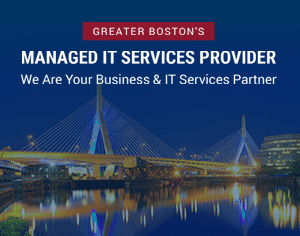Blog

Business Continuity Solutions: New Year, New Approach to Disaster Recovery & Backup Plans
One of the essential components to any business revolves around the protection of their data. Continuity in the event of an IT disaster, or even minor downtime, is critical. Ensuring your business can access critical information in those moments, as well as having the ability to recover can save thousands of dollars per hour depending on the size of your business.
No More Tapes…
The traditional approach to backup and Disaster Recovery revolved around tape backups, with secondary backup tapes stored at another location for safe-keeping. The process of recovery took significant time, often bringing any semblance of normal operations to a halt until a complete restoration was finished. Another approach involved replicating data and appliances at a secondary facility, allowing for a faster restoration time than tapes, but with significant investment to establish.
Aside from the costs associated with downtime and restoration, the hardware, software, and staffing, were incredibly expensive to maintain year-around. However, the refinement and evolution of Cloud-Based systems have provided a much more cost-effective solution.
Cloud-Based Backup & Recovery Services
Eliminating the need to have a secondary location for data replication, and/or storing multiple backup tapes were reason enough for many corporation to consider migrating their datacenters to the Cloud. However, the efficiency, as well as minimal up-front investment pushed many small & medium sized businesses to make the switch as well.
One of the biggest advantages to a Cloud-Based solution is a more practical seamless operation, with the capacity for businesses to have Cloud on-demand when an unplanned emergency occurs.
Business continuity is the core competency that surrounds this service, allowing for continual availability of your business’s data, regardless of the failure of an internal machine.
Considerations
When reviewing the many Cloud-Based offerings, there are a few things you should look for, such as:
- Cost: Understand how the service is charged, are they based on storage or the number of virtual machines? Are there additional costs associated with running your business in the Disaster Recovery mode from their Cloud?
- Time Permitted: Request clarity on the length of time you can run your operations while in Disaster Recovery mode; as well as any limitations set on the number of systems permitted to fail-over at any given time. If you have multiple virtual machines and more than one fail, that is not the time to discover surprise costs or limitations.
- Recovery Process: Ask how the failback can be done. Are you allowed to move back to production incrementally? Only bringing back the data that had changed since the machine failed, or is the restoration an all or nothing process to recovering data?
- Additional Protection: In the event your business is operating in Disaster Recovery mode, is the data replicated for a third copy until returning to production? This ensures recovery of files or information while operating in Disaster Recovery mode.
To learn how Cloud-Based Backup & Disaster Recovery Services can increase your reliability while providing substantial savings to your business, Contact Us today!
Confident with Your IT Strategy?
If you found the information in this blog post helpful and you'd like to discuss your business' technology strategy, then we'd be happy to hear from you.
Categories
- Backup & Disaster Recovery
- Business Operations
- Case Studies
- Cloud Services
- CMMC
- Cyber Security
- Employee Spotlight
- Finance & Budgeting
- Glossary Term
- Governance & IT Compliance
- Managed Services
- Mobile Device Management
- Network Infrastructure
- NIST/CMMC
- PCI
- Podcast
- Project Management
- TSI
- Uncategorized
- vCIO
Cyber Security Policy Starter Kit:
10 Critical Policies That Every Company Should Have in Place


